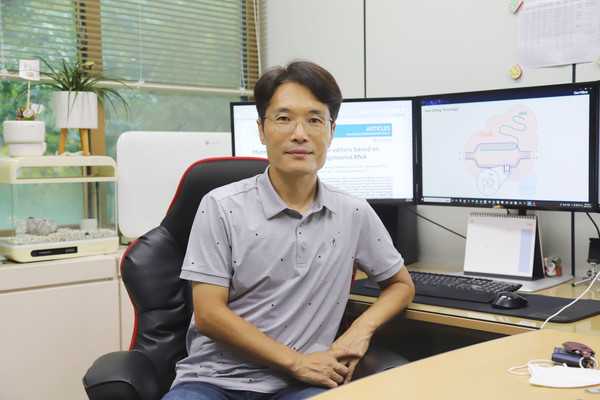Researchers at the Korea Research Institute of Biotechnology and Bioscience (KRIBB) have developed an ultra-small genetic scissor technology that significantly improved calibration efficiency.

Genetic scissors technology removes, inserts, or replaces DNA from a specific base sequence in genes, as represented by CRISPR, which received the Nobel Prize in Chemistry in 2020. CRISPR-based gene scissors consist of a guide RNA that tells where to cut and an enzyme that cuts the DNA. They then transport it by a carrier to a specific gene editing site.
They use adeno-associated virus (AAV) and lipid nanoparticles (LNPs) as carriers.
The AAV carriers can deliver genetic material to a variety of organs in the body. However, due to the large size of the gene scissors, there have been limitations in delivering CRISPR gene editing tools. LNPs can carry large genes but cannot reach all organs in the body.
Traditional cleavage-based gene scissors have been difficult to apply to point mutations and changes in the base of one of the gene sequences that causes a genetic disease. Therefore, treating it by replacing it with another gene is more effective than removing it.
Accordingly, the research team discovered the applicability of a protein called TnpB as a gene editing tool, used it as a DNA cutting enzyme, and developed genetic scissors that can be loaded into the AAV by combining it with the previously developed guide RNA. Through this, they overcame the problem of limited delivery size, making gene correction possible without DNA cutting.
Additionally, two guide RNAs became available, enabling simultaneous base calibration of multiple targets and greatly improved calibration efficiency with single targets.
The researchers confirmed the technology in animal models.
"Our research demonstrated gene editing for point base mutations, which account for more than 50 percent of the causes of genetic diseases," said Dr. Kim Yong-sam, who led the research. “We expect it to become one of the gene scissors technologies that contribute to developing treatments.”
The study was published in the online edition of Nature Chemical Biology on Aug 2.

